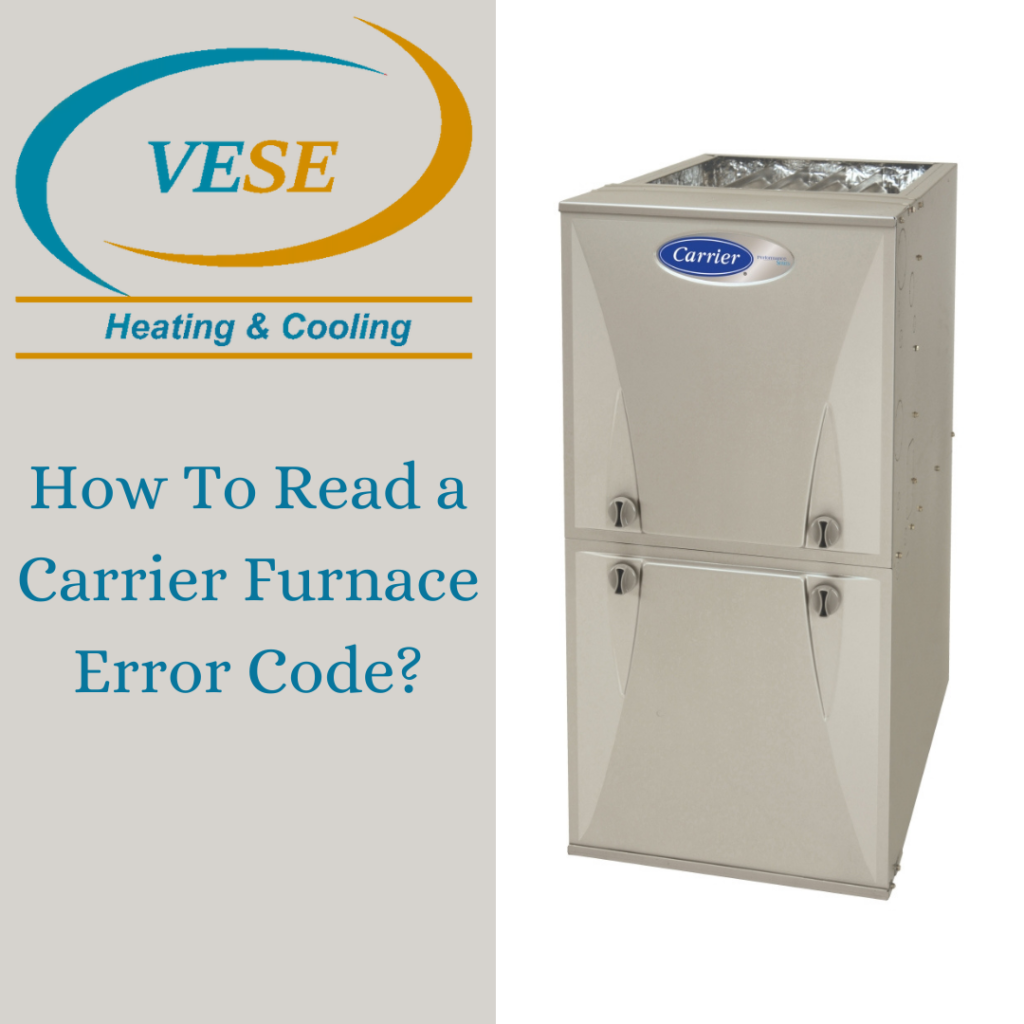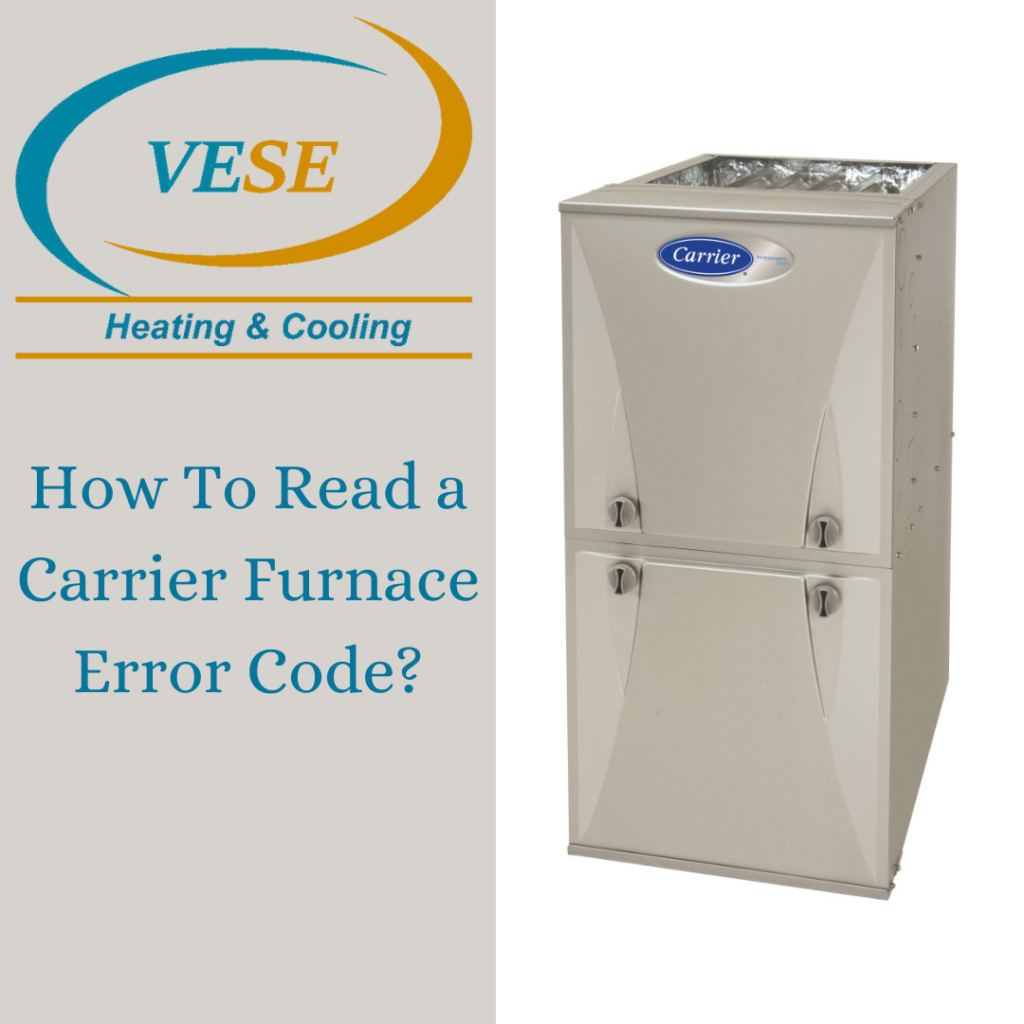Although furnace error codes vary by brand, all of the most popular furnace brands communicate error codes through a system of blinking lights. Locate the LED light and take note of its blinking pattern to read a furnace error code. Make a note of how many times the light flashes and how quickly it blinks. Consult the installation manual for your specific furnace to find out what each light combination means.
To assist you, here are some of the most common error codes encountered by Toronto homeowners.
Carrier is a well-known name in HVAC systems and has been in business since 1902, but that doesn’t mean a Carrier furnace is without problems.
Let’s look at some of the most common error codes to help you figure out what’s wrong with your Carrier furnace.
What does a flashing LED light on a Carrier furnace indicate?
Carrier, like many other top furnace brands, communicates error codes through LED flashing. A flashing LED can indicate a variety of things. The meaning is determined by the number of timesflashing LED blinks and the rate at which it blinks.

Here are Some Carrier Furnace Error Codes
| Error Code | Error Code Name | Solution |
| CONTINUOUS ON | – | Control has 24VAC power |
| RAPID FLASHING | Line voltage (115VAC) polarity reversed. | If twinned, refer to twinning kit instructions. |
| 1-1 | NO PREVIOUS CODE | Stored status codes are erased when power (115VAC or 24VAC) to control is interrupted or 48 hours after each fault is cleared. |
| 1-2 | BLOWER ON AFTER POWER UP (115VAC or 24VAC) | The blower runs for 90 seconds if unit is powered up during a call for heat (R-W closed) |
| 1-3 | LIMIT OR FLAME ROLL-OUT SWITCH LOCKOUT | Control will auto-reset after 3 hours. Reset switch or replace fuse link. |
| 1-4 | IGNITION LOCKOUT | Control will auto-reset after 3 hours. |
| 2-1 | GAS HEATING LOCKOUT | Control won’t auto-reset. Check for either a badly-wired gas valve or a defective control. |
| 2-2 | ABNORMAL FLAME-PROVING SIGNAL | Flame is proved while the gas valve is de-energized. Check for either a leaky or stuck-open gas valve. |
| 2-3 | THE PRESSURE SWITCH DIDN’T OPEN | Check for an obstruction in the pressure tubing or a pressure switch that is stuck closed. |
| 2-4 | THE SECONDARY VOLTAGE FUSE IS OPEN | Check for a short circuit in the secondary voltage wiring. |
| 3-1 | PRESSURE, DRAFT SAFEGUARD, AUX-LIMIT SWITCH DIDN’T CLOSE (OR REOPENED, DOWNFLOW ONLY) | If open for longer than 5 minutes, the inducer will shut off for 15 minutes before retry. Check for: low inducer voltage; proper vent sizing; defective inducer motor; defective blower motor or capacitor; defective pressure switch; restricted vent; excessive wind, inadequate combustion air supply; or obstructed pressure tubing. |
| 3-3 | LIMIT OR FLAME ROLL-OUT SWITCH IS OPEN | If the switch is open for longer than 3 minutes, the code will change to #1-3. The flame roll-out switch requires a manual reset. Check for: defective blower motor or capacitor; dirty filter or restricted duct system; loose blower wheel; faulty switch or connections; or inadequate combustion air supply. |
| 3-4 | IGNITION PROVING FAILURE | Control will try three more times before lockout #1-4 will occur. If the flame signal is lost after the trial for the ignition period, the blower will come on for a 90 second recycle delay. Check for: build-up on the flame sensor; proper microamp distribution to the flame sensor; defective gas valve or turned off gas valve; faulty hot surface ignitor; low inlet gas pressure; the manual valve is shut-off; continuity of control ground; low flame carryover or rough ignition; ungrounded flame sensor. |
CALL VESE WHEN YOUR CARRIER FURNACE NOT WORKING
When to call a professional to repair your Carrier furnace
Should there be a broken internal component that is resulting in your furnace not producing heat, beginning to leak or drip, or producing strange noises (i.e., banging, grinding, or short-cycling), this should warrant to contact license and insused local HVAC technician.
Although many Carrier furnace repair issues can be troubleshot on your own, it’s not a bad idea to contact a local certified technician for some discrepancies.

